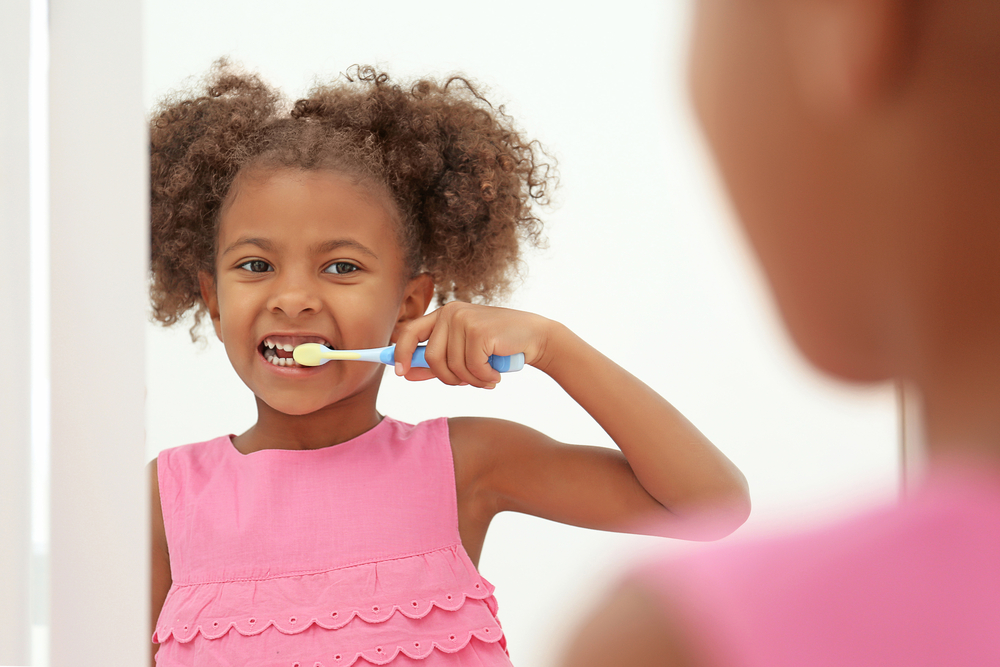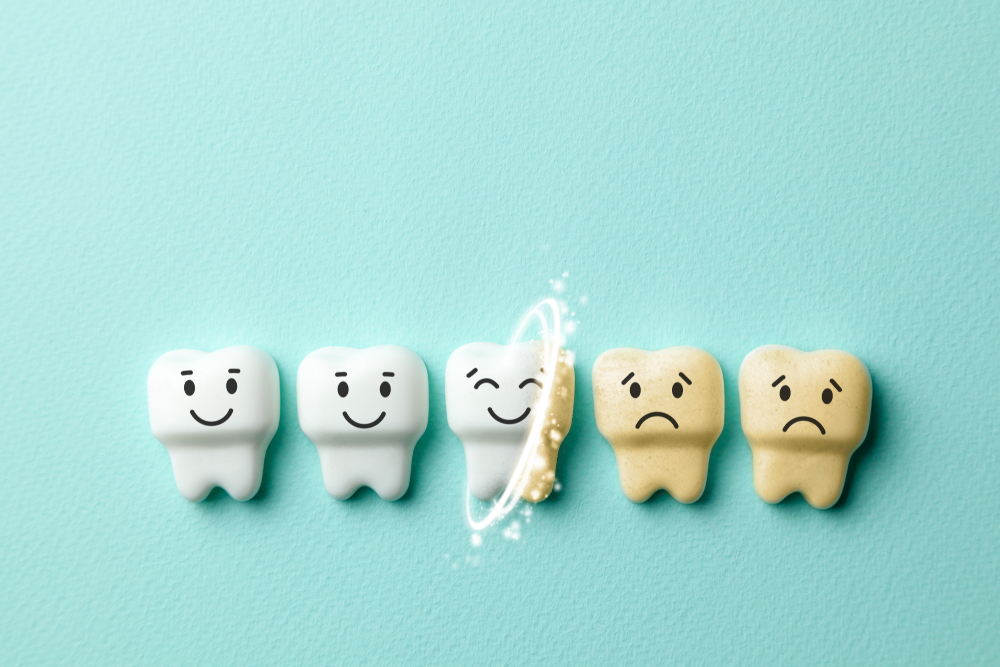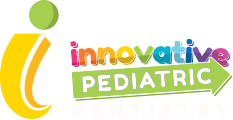
At our Naperville pediatric dentistry practice, concerned parents often ask us, “Why are my child’s teeth yellow despite brushing and flossing?” Many times, especially if it’s your child’s newly erupted permanent teeth, it’s not a cause for concern, however, there are instances where treatment could be needed. To give you a better idea of what’s normal and what’s not, here are some of the causes of yellow teeth in kids:
-
Erupting Permanent Teeth
If it seems like your child’s permanent teeth are coming in yellow, this is actually completely normal.
Compared to baby teeth, the permanent teeth have larger nerve canals and more dentin, which is the yellowish protective layer underneath the enamel. When the permanent teeth erupt, the enamel is a bit more transparent at first too, so the yellow can show through.
Plus, since the permanent teeth erupt right next to those stark white baby teeth, the contrast makes the difference more dramatic. As the enamel calcifies over time, the permanent teeth will look whiter. Once all of the permanent teeth are in, your child’s smile will be nice and uniform.
-
Poor Oral Hygiene
When kids don’t thoroughly brush and floss their teeth, plaque builds up on the enamel. This can lead to a dull or yellow appearance. Having kids floss once daily and brush at least twice a day will prevent plaque from sticking.
Once plaque hardens into tartar, it can’t be removed at home, so your child’s teeth will still be yellow despite brushing. Tartar has to be eliminated during a professional dental cleaning using special tools. If plaque and tartar are the cause of tooth discoloration, your child’s teeth should be whiter after their cleaning.
-
Foods and Drinks That Stain Teeth
Highly pigmented foods like blueberries and tomato sauce and beverages, such as soda, energy drinks and fruit juice can stain kids’ teeth, making them look yellow.
To avoid this, have kids rinse their mouth out with water after eating or drinking anything pigmented and be diligent about brushing. Try to serve pigmented foods in moderation and encourage kids to drink water and milk instead of sugary drinks.
If discoloration has already occurred and you’re wondering how to remove the yellow stains from your child’s teeth, talk to your pediatric dentist. We can generally buff away these surface stains during a cleaning.
-
Tooth Decay
Tooth decay is another culprit, though only the affected teeth will be discolored. As decay progresses into a cavity, there may be a visible hole or pit in the tooth and brown or black spots. Schedule a visit with your pediatric dentist as soon as possible. The earlier a cavity is treated, the easier, quicker and less expensive treatment will be.
-
Thin or Weak Enamel
The enamel starts to form on a child’s baby teeth when they’re in the womb. Enamel formation on permanent teeth begins in infancy and continues through early childhood. When the process is disrupted during either period, it can cause enamel defects, such as enamel hypoplasia. With enamel hypoplasia, the enamel is too thin, which exposes more of the dentin and causes teeth to look yellow.
Which teeth are affected by enamel hypoplasia depends on the cause of the disturbance in enamel formation and the timing, so you may notice your child’s baby teeth coming in yellow or it may only occur on a permanent tooth. Usually, only some of the teeth are affected.
The location and severity will determine whether treatment is needed. If the thin enamel is causing sensitivity or putting your child at risk for tooth decay, we may recommend professional fluoride treatment, dental sealants and other measures. In extreme cases, the affected permanent teeth will need to be covered with dental crowns to protect them when your child is older.
-
Certain Antibiotics
Yellow baby teeth from antibiotics is pretty rare these days. However, some antibiotics, namely tetracycline, can stain kids’ teeth if the mother takes them while pregnant or the child takes them before the age of 8. The teeth may start by looking yellow and then, eventually, turn brown. This effect is widely known, so most doctors don’t prescribe these types of antibiotics to young children or pregnant women anymore.
Can I Whiten My Child’s Teeth?
We don’t usually recommend whitening kids’ teeth. Whitening toothpaste can be too abrasive on their developing enamel and over-the-counter whitening treatments can cause sensitivity and irritate their gum tissue.
As we mentioned above, many times, a child’s permanent teeth coming in yellow is normal and their teeth will brighten in time. For causes like tooth decay, whitening won’t help either. Instead, bring up any concerns with your Naperville pediatric dentist.
Why are My Child’s Teeth Yellow? The Bottom Line
Staining, antibiotics, thin enamel, poor oral hygiene and natural variations in tooth color can all be behind a child’s yellow teeth. Visiting a pediatric dentist for an exam is the best way to get to the bottom of the issue.
Book an Appointment With a Naperville Kids’ Dentist
If your child is embarrassed by the color of their teeth or you’re worried that discoloration is a sign of a problem, schedule an appointment for your child at Innovative Pediatric Dentistry in Naperville, IL. We’ll perform an exam and find out what’s causing their teeth to look yellow. We can then create a personalized treatment plan and, if needed, discuss safe ways to brighten your child’s smile.
We also want to remind parents that Illinois law requires kids entering kindergarten, second, sixth and ninth grades in public, private and parochial schools to have a dental exam performed by a licensed dentist. Book your back-to-school check-up to have your forms ready for the new school year!


